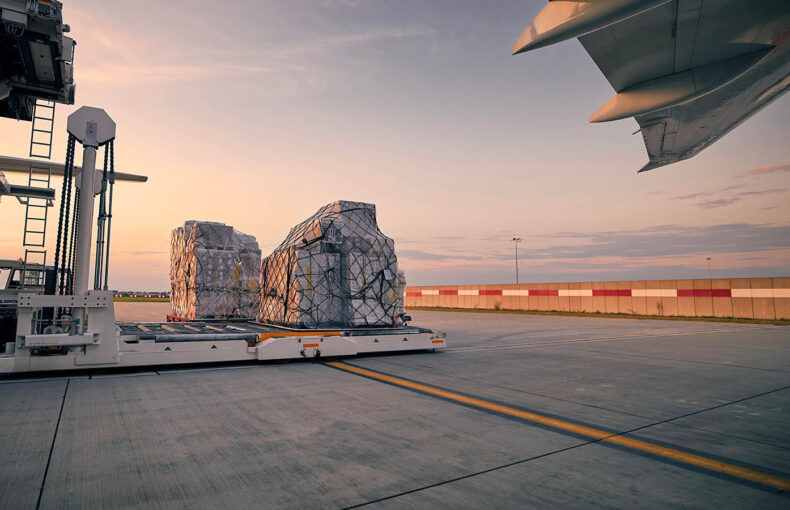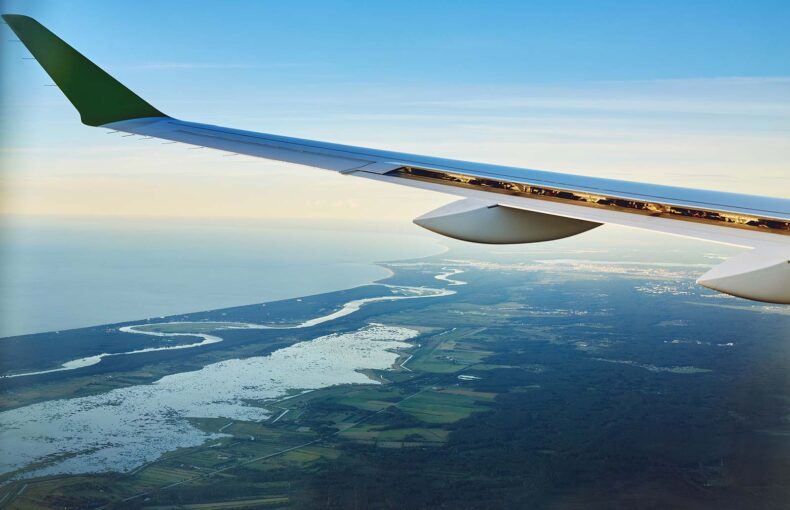Exploring the rapid growth and potential of India’s aviation sector
- Introduction
- Unprecedented passenger growth in India
- Indian air cargo's steady progress
- The fleet evolution of Indian airlines (2020-2023)
- Decoding the aircraft preferences: a closer look at Indian carriers' fleet composition
- India's aviation industry sets the stage for economic prosperity
- Harnessing the power of aviation analytics
India’s aviation industry is reaching new heights, solidifying its position as a key player in the global aviation landscape.
Recent data reveals a significant surge in domestic passenger traffic, indicating a higher air travel penetration in the country. As one of the fastest-growing aviation markets in the world, India’s strong rebound in flights is important not only for the country but also for the global aviation industry. This blog post delves into the phenomenal growth of India’s aviation sector in 2023, highlighting key growth statistics and the dynamic changes in the fleet of Indian carriers based on our satellite-based flight and aviation insights.
Unprecedented passenger growth in India
Since the beginning of this year, we have witnessed a remarkable surge in domestic Indian passenger traffic. In April 2023 alone, over 13,500 domestic flights took off across the country, with an additional 5,000 flights catering to international destinations. The airports in Delhi and Mumbai emerged as the top choices for both domestic and international routes. Among domestic destinations, Delhi, Mumbai, and Bengaluru lead the pack, while Dubai (UAE) and Kathmandu (Nepal) have become popular international destinations for Indian travelers.
Indian air cargo’s steady progress
While passenger numbers have soared, the recovery of Indian air cargo has been relatively slower. However, there are positive signs indicating a gradual bounce back. International air cargo volumes have shown slight growth, with shipments primarily taking place between Indian airports and Hong Kong, Vietnam, and Nepal. Domestically, Delhi, Mumbai, and Bengaluru remain central hubs for air cargo transportation. As the aviation industry continues to recover, we can anticipate a resurgence in both domestic and international air cargo.
The fleet evolution of Indian airlines (2020-2023)
While a majority of Indian airlines witnessed a decrease in their fleet numbers over the last three years, two notable exceptions have defied the trend. IndiGo and Vistara have emerged as the frontrunners, displaying positive growth in their fleets.
Fleet growth of Indian carriers (2020-2023):
IndiGo is also leading the way when it comes to the number of aircraft operated by each of the analyzed Indian airlines. The latter has the largest fleet in India with a 19% aircraft increase in the last three years. While Air India and Go First maintained a steady fleet size, with Air India operating approximately 123 aircraft and Go First soaring with around 57 planes until its bankruptcy in early 2023, it is SpiceJet that took a different course. SpiceJet was the only Indian carrier that decided to trim its fleet, witnessing a reduction of 38% in the number of aircraft during the analyzed period.
Number of aircraft operated by Indian carriers (2020-2023):
Looking more closely at the aircraft type utilized by different Indian carriers, we observed that the Airbus A320 family emerged as the undisputed favorite. Renowned for its efficiency and reliability, this aircraft type has become the go-to choice for carriers operating in India. In contrast, the Boeing 737 fleet decreased over the past three years, reflecting the ever-evolving market dynamics and the strategic decisions made by airlines. Notably, the fleet size of the B747 Q400 has experienced a decline, making way for the rise of ATRs and A320s as the preferred alternatives.
Fleet based on aircraft type:
Decoding the aircraft preferences: a closer look at Indian carriers’ fleet composition
With a fleet assortment of both single-aisle and wide-body aircraft types, Air India boasts the most diverse fleet among all Indian carriers. The A320-200N and B787-8 emerge as the most widely operated aircraft within their fleet, ensuring flexibility and catering to varied travel requirements.
Meanwhile, IndiGo established itself as one of the world’s largest A320 fleet operators. Their fleet of ATR aircraft has experienced remarkable expansion over the past three years. This expansion echoes their commitment to regional connectivity and expanding operations.
Fleet composition of Air India:
Fleet composition of Indigo:
When it comes to the diverse array of aircraft types across Indian airlines, Vistara sets itself apart by being the sole Indian carrier operating the B787-9, an aircraft known for its advanced features and passenger comfort. However, the most widely utilized aircraft type in Vistara’s fleet is the A320-200N, a workhorse that combines efficiency and reliability to cater to the airline’s extensive domestic and international routes.
Interestingly, SpiceJet stands out as the only top airline in India that does not include the A320 aircraft in its fleet. Their fleet mainly consists of B737 and Q400 aircraft. While the B737s offer versatility for both short and medium-haul routes, the Q400s excel in connecting smaller airports and regional destinations.
Fleet composition of Vistara:
Fleet composition of SpiceJet:
India’s aviation industry sets the stage for economic prosperity
The domestic air connectivity in India is rapidly expanding and contributing to establishing Indian prominence on the global stage. The strong rebound of flights signifies the industry’s resilience, adaptability, and capacity to recover from challenges. This rebound is important as it contributes to India’s position in the global aviation landscape, drives economic growth, enhances connectivity, facilitates business and trade, fuels technological advancements, and fosters collaboration.
Harnessing the power of aviation analytics
In an era where data-driven insights are essential for success, space-based ADS-B data stands at the forefront of aviation analytics. The unique advantage of space-based ADS-B data lies in its ability to track aircraft positions even in remote and oceanic regions where ground-based infrastructure is limited or non-existent. This rich global dataset empowers stakeholders, including airlines, air traffic management organizations, and industry analysts, to better understand flight patterns, congestion hotspots, and operational inefficiencies to make informed decisions regarding route optimization, airspace management, and fleet planning.
 Written by
Written by


